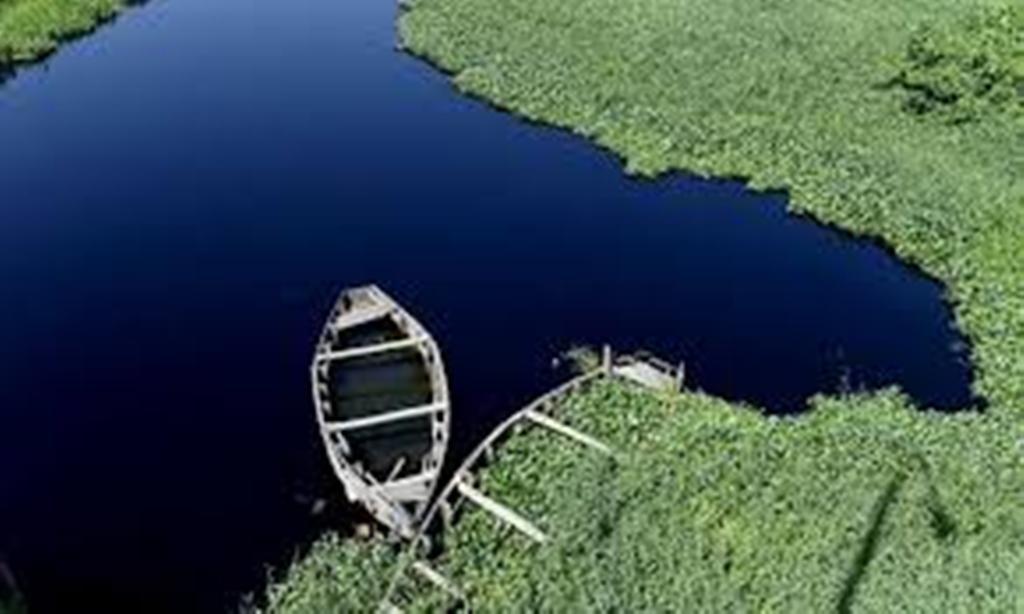
-തയ്യാറാക്കിയത്
Alfiya P V, Scientist, Engineering Division, ICAR-CIFT, Cochin, Manoj P Samuel,Principal Scientist and Head, Engineering Division, ICAR-CIFT, Cochin
ഇന്ന് കേരളമുള്പ്പെടെ രാജ്യത്തെ മിക്ക ജലസ്രോതസ്സുകള്ക്കും ഭീഷണിയായി ജല കളകള് ഉയര്ന്നുവന്നിട്ടുണ്ട്. ഈ കളകളുടെ വളര്ച്ചാ നിരക്ക് വളരെ വേഗത്തിലായതിനാല് അവ ജലാശയങ്ങളില് ഇടതൂര്ന്ന വിരിപ്പായി വികസിക്കുന്നു. ബാഷ്പപ്രവാഹം, നദികളിലെയും കനാലുകളിലെയും തടസ്സങ്ങള്, നാവിഗേഷനെ തടസ്സപ്പെടുത്തല്, ഓക്സിജന്റെ അളവ് കുറയുന്നതുമൂലം നാടന് മത്സ്യങ്ങളുടെ നാശം എന്നിവ ഇതുവഴി സംഭവിക്കുന്നു. ഇന്ത്യയിലെ ജലനഷ്ടത്തിന്റെ 20 മുതല് 40% വരെ ജലകളകള് മൂലം സംഭവിക്കുന്നതാണ്. ജലകളകളുടെ സാന്ദ്രമായ വളര്ച്ച മലേറിയ, എന്സെഫലൈറ്റിസ്, ഫിലേറിയാസിസ് എന്നിവയ്ക്ക് കാരണമാകുന്ന കൊതുകുകളുടെ വികാസത്തിന് അനുയോജ്യമായ ആവാസ വ്യവസ്ഥ നല്കുന്നു; അതുവഴി മനുഷ്യന്റെ ആരോഗ്യത്തെയും ബാധിക്കുന്നു. ഈ കളകള് രോഗമുണ്ടാക്കുന്ന ജീവികളുടെ വെക്റ്ററുകളായി വര്ത്തിക്കുകയും ജലാശയങ്ങളുടെ സൗന്ദര്യാത്മക മൂല്യം വളരെയധികം കുറയ്ക്കുകയും വിനോദസഞ്ചാരത്തെ ബാധിക്കുകയും ചെയ്യുന്നു. സാധാരണയായി തിരിച്ചറിഞ്ഞ ജലകളകള് ഇവയാണ്.മുകളില് ഉയര്ന്നു കിടക്കുന്നവ (ഉദാ. ക്യാറ്റ് ടെയില്, വാട്ടര് ലില്ലി, വാട്ടര് പ്രിംറോസ്, അലിഗേറ്റര് ബള്റഷുകള്, സ്പൈക്ക് റഷുകള്, ടൈഫ, ഫ്രാഗാമൈറ്റ്സ് മുതലായവ), വെള്ളത്തില് മുങ്ങികിടക്കുന്നവ (ഉദാ. ഹൈഡ്രില്ല ബ്രിറ്റില്, കുളത്തിലെ കളകള്, കൂണ് ടെയില്, വാലിസ്നേറിയ മുതലായവ) ഫ്േളാട്ടിംഗ് (ഉദാ: ഡക്ക് വീഡ്സ്, അസോള, വാട്ടര് ഹയാസിന്ത് മുതലായവ) എന്നിവയാണവ.
(Aquatic weeds have emerged as a potential threat to the water resources in the country today. The growth rate of these weeds is so fast that they develop a dense mat over water bodies. The risks associated includes enormous water loss through evapotranspiration, clogging of rivers and canals, hampering of navigation and the most important of all- displacing of the native fish species due to depletion in oxygen levels. About 20-40% of the water loss in India is caused by the menace of aquatic weeds. Dense growth of aquatic weeds may provide ideal habitat for the development of mosquitoes causing malaria, encephalitis and filariasis; thereby affecting human health as well. These weeds may also serve as vectors for disease causing organisms and can greatly reduce the aesthetic value of water bodies from a recreational point of view. Commonly identified aquatic weeds can be emergent (Eg. Cattail,Water lily, Water primrose, Alligator bulrushes, Spike rushes, Typha, Phragamites, etc.), submersed (Eg. Hydrilla brittle, Pond weeds, Coontail, Vallisneria, etc.) or floating (Eg: Duckweeds, Azolla, Water hyacinth, etc.) types.
അതിവേഗം വളരുന്ന ജലകളകളെ ഫലപ്രദവും സാമ്പത്തികവും പരിസ്ഥിതി സൗഹൃദവുമായ മാര്ഗ്ഗങ്ങളിലൂടെ നിയന്ത്രിക്കേണ്ടതുണ്ട്. ജലകളകളെ നിയന്ത്രിക്കുന്നതിനുള്ള എഞ്ചിനീയറിംഗ് ഇടപെടലുകള് താഴെ പറയും പ്രകാരമാണ്
മെക്കാനിക്കല് നിയന്ത്രണ രീതി(Mechanical harvesting)
മെക്കാനിക്കല് നിയന്ത്രണമാണ് പരമ്പരാഗത രീതി. ജലോപരിതലത്തിന് താഴെവച്ച് സസ്യങ്ങളെ മുറിക്കുകയാണ് ചെയ്യുക. വെള്ളത്തില് മുങ്ങിയ ജലസസ്യങ്ങളെ നിയന്ത്രിക്കുന്നതിന് ഈ ഉപകരണം പ്രധാനമായും വലിയ തടാകങ്ങളില് ഉപയോഗിക്കുന്നു. Mechanical Harvester ഉപയോഗിച്ച് 5- 6 അടി ആഴത്തില് കളകള് മുറിക്കാന് കഴിയും.Harvester ശേഖരിക്കുന്ന കളകളെ പിന്നീട് മുകളിലെ സ്ഥലത്തേക്ക് മാറ്റാം. മെഷീനുകളുടെ വലുപ്പം കാരണം, മതിയായ ആഴമുള്ള വലിയ പ്രദേശങ്ങളില് മാത്രമേ ഈ രീതി ഉപയോഗിക്കാന് കഴിയൂ. മെക്കാനിക്കല് harvest ന് ഏക്കറിന് 20,000-32,000 രൂപ വരെയാകും. ഉപകരണങ്ങള് വാങ്ങുന്നതിനുള്ള ചെലവ് 1, 400,000 മുതല് 4,400,000 വരെയാണ്.(
Mechanical harvesting is a common form of mechanical control. The harvester cuts the vegetation below the water's surface. This tool is primarily used on large lakes to control submerged aquatic vegetation. Most harvesters have the capacity to cut down to a 5 or 6 foot depth. The weeds collected by the harvester can then be transferred to an upland disposal site. Due to the size of the machines, only larger areas with a sufficient depth are suitable for this treatment. The price per acre of mechanical harvesting may range from 20,000-32,000, excluding mobilization, and the cost for equipment purchase ranges from Rs.1, 400,000 to 4,400,000.)

റൊട്ടോവേഷന്( Rotovation)
വെള്ളത്തില് മുങ്ങിയ ഭാഗങ്ങള് ചെടിയുടെ വേരുള്പ്പെടെ വെട്ടിമാറ്റുന്ന രീതിയാണ് റൊട്ടോവേഷന്. സസ്യവേരിനെ അടികൂട്ടി ഇളക്കി നീക്കം ചെയ്യുന്നതിനായി എട്ട് മുതല് പത്ത് ഇഞ്ച് വരെ ചെളിയിലേക്കിറങ്ങുന്ന ടില്ലര് ഹെഡ് ഉള്ള ഒരു ബാര്ജ് റോട്ടോടില്ലിംഗ് മെഷീനാണ് റോട്ടോവേറ്റര്. ഹാര്വെസ്റ്റര് വേരോടെ പിഴുതുമാറ്റിയ സസ്യവസ്തുക്കള് ശേഖരിക്കും, എന്നാല് റോട്ടോവേറ്ററുകള്ക്ക് ഈ കഴിവില്ല. അതുകൊണ്ടുതന്നെ വേരുകളുടെ പിണ്ഡം ഉപരിതലത്തില് ഒഴുകി നടക്കും. അതുകൊണ്ടുതന്നെ റോട്ടോവേറ്റര് പ്രയോഗിച്ചു കഴിഞ്ഞാലുടന് ഹാര്വെസ്റ്റര് ഉപയോഗിച്ച് ജലത്തിന്റെ ഉപരിതലത്തില് നിന്ന് ചെടികള് ശേഖരിക്കുകയോ തീരത്തേക്ക് കൊണ്ടുവന്ന് നീക്കംചെയ്യുകയോ വേണം.പ്രദേശത്തിന്റെ വലുപ്പം, സസ്യങ്ങളുടെ സാന്ദ്രത, ഉപയോഗിച്ച യന്ത്രങ്ങള്, മറ്റ് സൈറ്റ് പരിമിതികള് എന്നിവ അനുസരിച്ച് റൊട്ടവേഷന് ചെലവുകള് വ്യത്യാസപ്പെടുന്നു. റോട്ടവേഷന് കരാര് ചെലവ് ഏക്കറിന് 48,000 മുതല് 68,000 രൂപ വരെയാണ്.(
Rotovation is a method for chopping up and disturbing plants, focusing on the base of the plant, including submerged portions. A rotovator is a barge mounted rototilling machine that lowers a tiller head about eight to ten inches into the sediment to dislodge plant root crowns. Unlike harvesters, rotovators do not have the capability to collect the uprooted plant material and the buoyant root masses float to the surface. The plant material may then be removed by a harvester following the rotovator, manually collecting plant material from the water surface, or raking along the beaches. Costs for rotovation vary according to treatment scale, density of plants, machinery used, and other site constraints. Contract costs for rotovation range from Rs.48.000 - 68,000 per acre.)
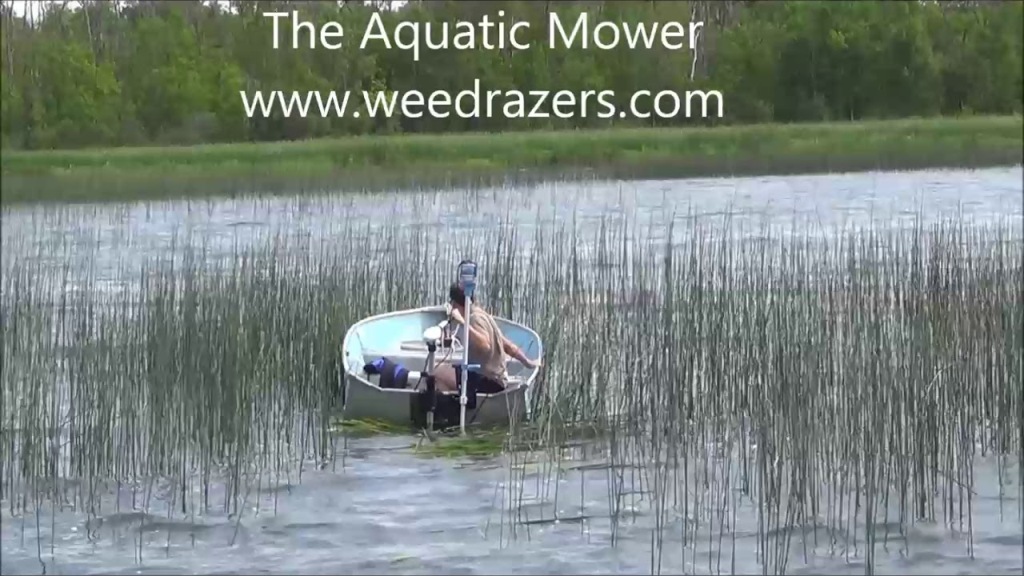
ചെയിനിംഗ് (Chaining)
രണ്ട് ട്രാക്ടറുകള്ക്കിടയില് ഘടിപ്പിച്ചിരിക്കുന്ന കനത്ത ഇരുമ്പ് ചെയിന് ചേര്ന്ന സംവിധാനമാണിത്. ഇത് ഇടതൂര്ന്ന കള ബാധിത കുഴി അല്ലെങ്കില് ഇടത്തരം കനാലിലെ കളകള് ഒഴിവാക്കാന് ഉപയോഗിക്കാം. ചെയിന് കളകളെ വേരോടെ പിഴുതെടുക്കും.മുകളില് പൊന്തിക്കിടക്കുന്നതും വെള്ളത്തില് മുങ്ങിക്കിടക്കുന്നതുമായ കളകള് നീക്കാന് ഈ രീതി ഫലപ്രദമാണ്. കളയുടെ പുതിയ ചിനപ്പുപൊട്ടല് ജലനിരപ്പില് നിന്ന് 30-50 സെന്റിമീറ്റര് ഉയരത്തിലായിരിക്കുമ്പോള് ചങ്ങലയുടെ രീതി പിന്തുടരണം. മിക്ക കളകളും നീക്കം ചെയ്യുന്നതിന് ചെയിന് മുകളിലേക്കും താഴേക്കും വലിച്ചിടുന്നത് ഫലപ്രദമാണ്. ഫലപ്രദമായ കളനിയന്ത്രണത്തിനായി ഇത് ഇടയ്ക്കിടെ ആവര്ത്തിക്കുന്നത് നല്ലതാണ്.(
Chaining consists of a heavy iron drag chain attached between two tractors, which is dragged down a densely weed infested ditch or medium canal. The chain tears the rooted weeds and loosens them from the bottom. This method has been found effective where there is dominance of emergent and submersed weeds. The practice of chaining should be followed when new shoots of weed are around 30-50 cm above water level. Dragging the chain up and down the stream may be effective in dislodging most of the weeds. For effective weed control the practice should be repeated at frequent intervals if found successful. )
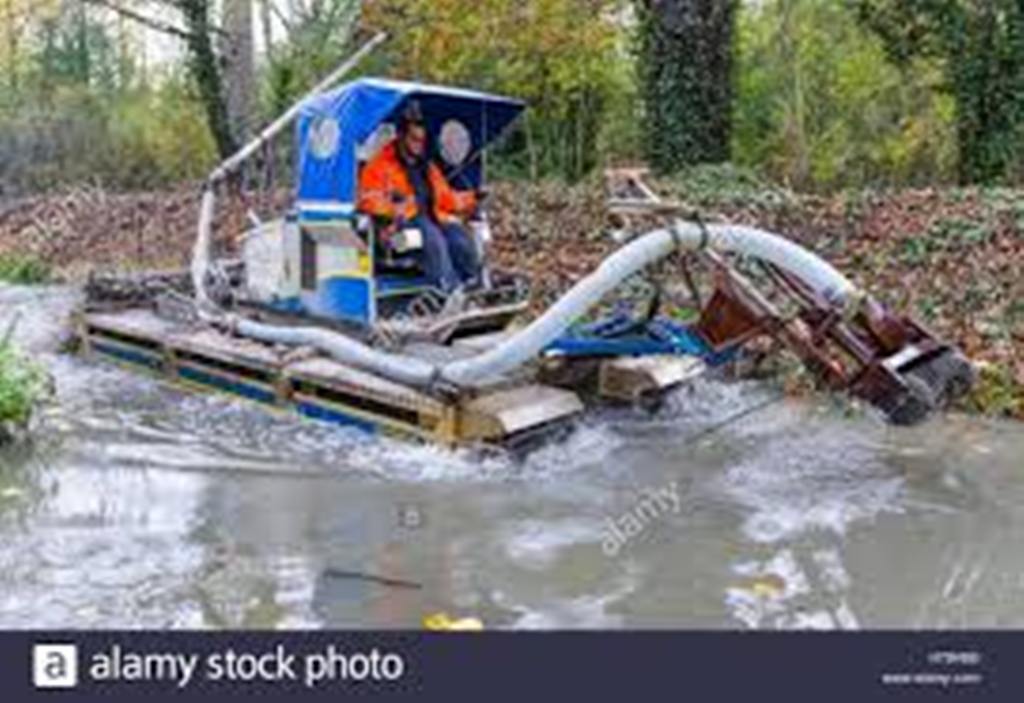
ഡ്രെഡ്ജിംഗ് ( Dredging)
കള സസ്യങ്ങളും അധിക ചെളിയും അഴുക്കുചാലുകളില് നിന്നും കുഴികളില് നിന്നും നീക്കം ചെയ്യുന്ന രീതിയാണ് ഡ്രഡ്ജിംഗ്. നല്കുന്ന നിര്ദ്ദേശങ്ങള്ക്കനുസരിച്ച് അടയ്ക്കുകയും തുറക്കുകയും ചെയ്യാവുന്ന ഫോര്ക്ക്ഡ് ബക്കറ്റ് സജ്ജീകരിച്ചിരിക്കുന്ന ഒരു യന്ത്രമാണ് ഡ്രെഡ്ജര്. ഇത് നിലത്തു നിന്നോ വെള്ളത്തില് ഒരു ബോട്ടില് നിന്നോ പ്രവര്ത്തിപ്പിക്കാനാകും. വലിയ ജലാശയങ്ങളിലും കനാലുകളിലും ഡ്രെയിനുകളിലും ഡ്രെഡ്ജിംഗ് നടത്താം. കുഴികള് വൃത്തിയാക്കുന്നതിനുള്ള ഒരു സാധാരണ രീതിയാണിത്, എന്നാല് വേഗത കുറഞ്ഞതും സമയമെടുക്കുന്നതും ചെലവേറിയതുമായ പ്രവര്ത്തനവുമാണ്. ചെറിയ തടാകങ്ങള്, ജലസംഭരണികള് തുടങ്ങിയവയ്ക്ക് ചുറ്റുമുള്ള പ്രദേശം കൃഷിചെയ്യുന്നുണ്ടെങ്കിലോ മണ്ണിടിച്ചില് ഉണ്ടാകുന്നുണ്ടെങ്കിലോ വനവത്ക്കരണം നടക്കുന്നില്ലെങ്കിലോ ചെളി അടിഞ്ഞ് ആഴം കുറയാനും കളകള് വളരാനും സാധ്യത ഏറെയാണ്.അത്തരമൊരു സാഹചര്യത്തില് മണ്ണ് നീക്കം ചെയ്യാനും തടാകങ്ങളുടെ ജല ശേഷി വര്ദ്ധിപ്പിക്കാനും ഡ്രെഡ്ജിംഗ് സൗകര്യങ്ങള് ഉപയോഗിക്കാം. ഡ്രെഡ്ജിംഗ് ദീര്ഘകാല ഫലം നല്കുന്ന ഒന്നാണ്. (Dredging is one of the techniques by which the weed vegetation along with excess silt is removed from drains and ditches. A Dredger is a machine equipped with a forked bucket which can be opened and closed on command. The machine could operate from the ground or from a boat in water. Dredging is done in large water bodies, canals and drains. It is a common method of cleaning ditches but slow, time consuming and is a costly operation. Small lakes, water reservoirs etc. get silted if area surrounding them is under cultivation or surrounded by erodable lands with poor aforestation. When silts get sedimented at bottom the water retention gets decreased and emergent weeds establish. Such a situation demands the use of dredging facilities to remove silt and increase the water capacity of lakes. This also reduces the problem of emergent weeds. Results of dredging can be very long term)

മോവിംഗ് (Mowing)
മാനുവല് അല്ലെങ്കില് പവര് ഓപ്പറേറ്റഡ് മോവിംഗ് മെഷീനുകളുടെ സഹായത്തോടെ നിലത്തെ കളകളെ മുറിക്കുന്ന രീതിയാണിത്. ഉയരത്തില് വളരുന്ന സസ്യങ്ങളില് മൊവിംഗ് ഫലപ്രദമാണ്. ആവര്ത്തിച്ചുള്ള മുറിക്കല്, ഉയര്ന്നുവരുന്ന കളകളുടെ വിത്ത് ഉല്പാദനത്തെ തടയുക മാത്രമല്ല, കാര്ബോഹൈഡ്രേറ്റ് കരുതല് ശേഖരിച്ചുവയ്ക്കുന്ന അടിഭാഗം ദുര്ബ്ബലമാകുന്നതിനാല് വളര്ച്ചയെ തടയുകയും ചെയ്യും. കാര്ബോഹൈഡ്രേറ്റ് കരുതല് കുറവായിരിക്കുമ്പോഴാണ് വെട്ടാന് ഏറ്റവും അനുയോജ്യമായ സമയം. ആവര്ത്തിച്ചുള്ള മൊവിംഗ് കാര്ബോഹൈഡ്രേറ്റ് കുറയ്ക്കുകയും സസ്യങ്ങളുടെ വളര്ച്ച തടയുകയും ചെയ്യും. സാധാരണയായി, ഈ രീതി കനാലുകള്, ജലസംഭരണികള് തുടങ്ങിയവയില് ഉയര്ന്നുവരുന്ന കളകളെ ഫലപ്രദമായി നിയന്ത്രിക്കുന്നു. മോവിംഗ് താത്ക്കാലിക ഫലമെ നല്കുകയുള്ളു.(
This process consists of cutting the weeds close to the ground with the help of manual or power operated mowing machines. Mowing is effective on tall growing plants. Repeated mowing not only prevents seed production of emergent weeds but may also starve the underground parts which store carbohydrate reserves and provides energy to vegetative reproductive organs. The best time to mow is when carbohydrate reserves are low. Repeated mowing hastens carbohydrate depletion and slow death of plants. Generally, this practice effectively controls emergent weeds on canals, water reservoirs etc . The effect of mowing is short lived.)

കള റോളറുകള്( Weed Rollers)
ചെറിയ സ്ഥലങ്ങളിലെ കളകളെ നീക്കുന്നതിനുള്ള പുതിയ രീതികളാണ് കള റോളറുകളും സ്വീപ്പറും. കള റോളറുകളില് ഒരു നീളമുള്ള മെറ്റല് സിലിണ്ടര് (30 'വരെ) ഒരു ഡോക്കില് ഘടിപ്പിച്ചിരിക്കുന്നു അല്ലെങ്കില് ഒരു അറ്റത്ത് പൈല് ചെയ്യുന്നു. അറ്റാച്ചുമെന്റ് പോയിന്റില് നിന്ന് 270 ഡിഗ്രി ആര്ക്ക് ഉപയോഗിച്ച് ഒരു മോട്ടോര് സിലിണ്ടറിനെ മുന്നോട്ടും പിന്നോട്ടും നയിക്കുന്നു. പ്രദേശത്തെ ഇളം ചെടികളെയും മണ്ണിനെയും സിലിണ്ടര് ഞെരുക്കുന്നു. റോളറിലെ ഫിന് പോലുള്ള ബ്ലേഡുകള് ഇളകിയ മണ്ണില് നിന്ന് ഉയരമുള്ള ചെടികളും വേരുകളും നീക്കം ചെയ്യും. കള നിയന്ത്രണത്തിന്, ആഴ്ചയില് ഒരിക്കല് ഇത് ഉപയോഗിക്കുന്നത് നല്ലതാണ്.(
Weed rollers and sweepers are relatively new methods to control nuisance weed infestations in small locations. Weed rollers include a long metal cylinder (up to 30') attached to a dock or piling on one end. A motor drives the cylinder forward and backwards in a 270-degree arc from the attachment point. The cylinder compresses young plants and soil in the area. Fin-like blades on the roller remove taller plants from sediment and may remove roots. For weed control, use once per week should be sufficient. )
അതിരുകള്( Barriers)
ജലകളകളുടെ ഒഴുക്ക് തടയാന് മുള അല്ലെങ്കില് റബ്ബര് ബൂം ഫെന്സിംഗ് ഉപയോഗിക്കുന്നു. അവയിലൂടെ വെള്ളം കടന്നുപോകാന് അനുവദിക്കുന്നതിനും ഒഴുക്കിന്റെയും കാറ്റിന്റെയും പ്രവര്ത്തനം നിലനിര്ത്തുന്നതിനും സഹായിക്കുന്നു. ഫ്ളോട്ടിംഗ് ബൂമുകള് ഉപയോഗിച്ച് ഒഴുകി നടക്കുന്ന സസ്യങ്ങളെ തടയാം.ഫ്േളാട്ടിംഗ് സസ്യങ്ങള് വെള്ളം കെട്ടിക്കിടക്കുന്നത് ഒഴിവാക്കും, പ്രത്യേകിച്ചും മറീനകള്, നീന്തല് പ്രദേശങ്ങള് തുടങ്ങിയ ഇടങ്ങളില് ഇത് ഫലപ്രദമാണ്. ഫ്േളാട്ടിംഗ് ബൂമുകള് ഒരു ജലാശയത്തിനുള്ളിലെ നീരൊഴുക്കുകളിലൂടെ നീങ്ങുന്ന ഫ്േളാട്ടിംഗ് സസ്യങ്ങള് ശേഖരിക്കാനും അല്ലെങ്കില് ഫീഡര് ജലം ജലസംഭരണിയിലെത്തുന്നതിന് മുന്പ് ജലകളകളെ തടയാനും ഉപയോഗിക്കാം. അത്തരം രീതിയില് ശേഖരിക്കുന്ന സസ്യങ്ങള് മറ്റ് നിയന്ത്രണ രീതികള് ഉപയോഗിച്ച് കൂടുതല് കാര്യക്ഷമമായി നീക്കംചെയ്യാം.(
Bamboo or inflatable rubber boom fencing is used to restrain the drift of free floating aquatic weeds. The barriers are made to allow water to pass through them and to sustain the wave and wind action. The use of floating booms can be useful in a floating plant control program. They can be deployed to prevent floating plants from clogging water intakes, marinas, swimming areas, or other susceptible sites. Floating booms can also be used to collect floating plants being moved by currents within a water body, or prevent plants from entering the main course of the reservoir from feeder embayment. Plants collected in such manner can be more efficiently removed with other control methods)
വിനോദം, കൃഷി, വ്യവസായം എന്നിവയ്ക്കുള്ള ജലസ്രോതസ്സുകളുടെ വര്ദ്ധിച്ചുവരുന്ന ആവശ്യം കള നിയന്ത്രണ തന്ത്രങ്ങള് അവലംബിക്കാന് പ്രേരിപ്പിക്കുന്നു. എഞ്ചിനീയറിംഗ് ഇടപെടല് രീതികള് വേഗമാര്ന്നതും ടാര്ഗെറ്റ് സ്പെസിഫിക്കും പരിസ്ഥിതി സൗഹൃദവുമാണ് എന്നതിനാല് ജലജീവികളില് പരിസ്ഥിതി വ്യതിയാന സാധ്യതകള് കുറയ്ക്കുന്നു. കള നീക്കം ചെയ്യുന്നതിനുള്ള ജൈവരീതിയേക്കാളും നേരിട്ടുള്ള ഫിസിക്കല് രീതിയേക്കാളും ഇവ കൂടുതല് ഗുണപ്രദമാണ്. അതുകൊണ്ടുതന്നെയാണ് മെക്കാനിക്കല് കള നീക്കല് ഇന്നത്തെ സാഹചര്യത്തില് ജനപ്രീതി നേടിവരുന്നതും.(The growing demand for water resources for recreation, agriculture and industry propels to resort on weed control techniques. Engineering intervened methods are found to be quick, target specific, environment friendly and provides fewer chances of permitting ecological shifts in aquatic flora. Also these are more reliable compared to biological and physical methods of weed removal. Hence, this area of weed harvesting is gaining popularity and momentum in the present scenario)
കൂടുതൽ അനുബന്ധ വാർത്തകൾ വായിക്കുക: റബ്ബറിന്റെ വളപ്രയോഗം അറിയാൻ വിളിക്കാം








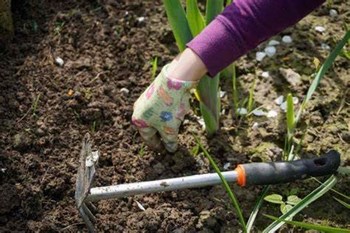



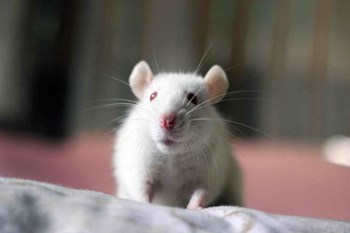
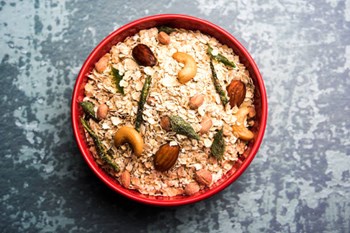











Share your comments